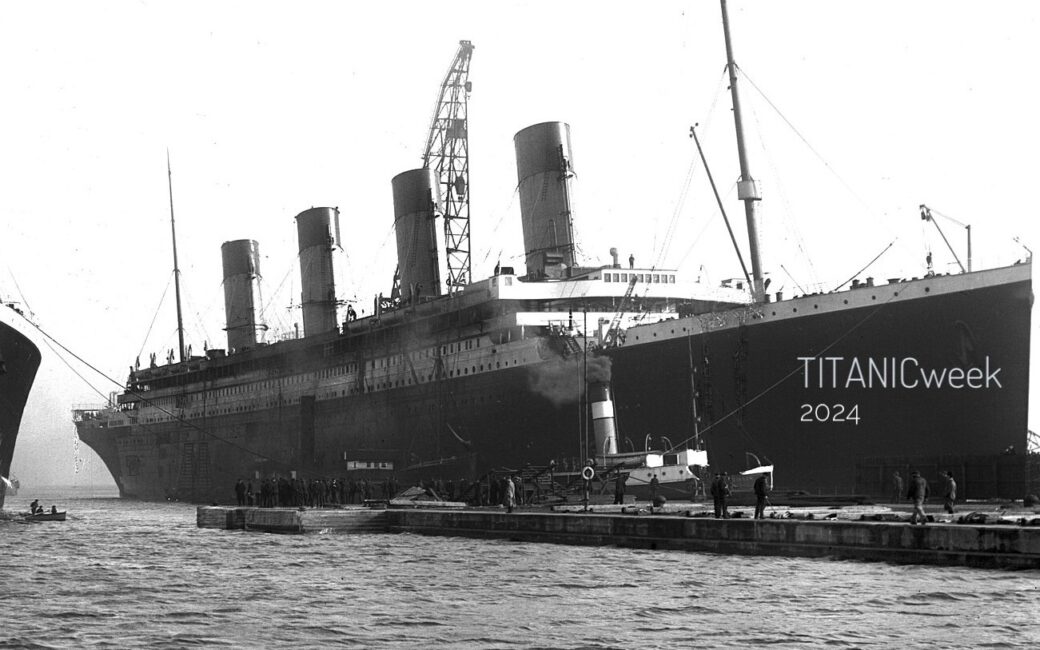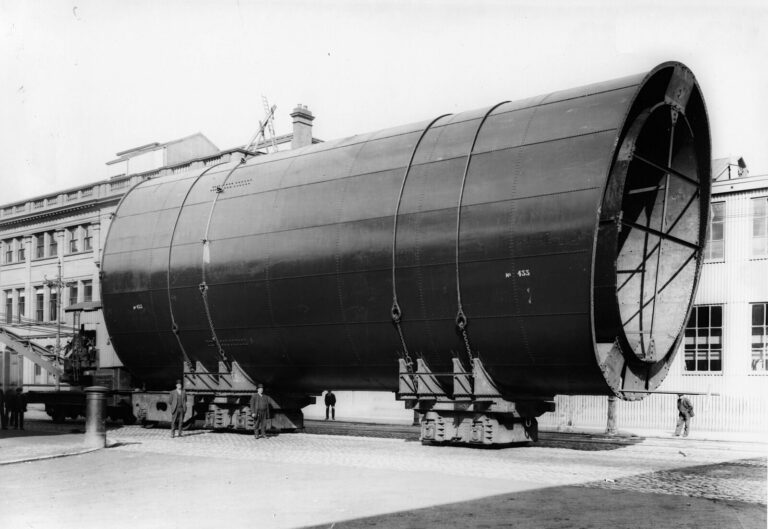"Not Bad for a Shipwrecked Man": Patrick O'Keefe
Patrick O’Keefe had tried to sell his ticket for Titanic for £7.
Patrick had been awaiting the Titanic’s arrival in a hotel in Queenstown, Ireland. And he had dreamt the night before his departure that the ship would sink.
Patrick had moved to America two years earlier in 1910, when he was only 19 years old. Freshly settled in New York City and living with his cousin, he worked as a porter and general laborer.
Patrick's work strengthened him with regular heavy lifting. He also reportedly had a tradition of swimming in the River Suir each Christmas Day.
In 1912, at the age of 21, Patrick had returned to Ireland to visit with his family and meet his new stepmother. He had initially booked passage back to America on the SS Baltic.
But Patrick’s brother, James, convinced him to stay over an extra week in Ireland so the entire family could be together for Easter on April 7th.
And so Patrick transferred his ticket to Titanic.
Having failed to find a taker for his doomed ticket, Patrick reluctantly embarked on the Titanic at Queenstown on April 11th.
He did so only because he feared derision.
He wrote to his father, “I thought if I went back to Waterford again the boys would be laughing at me.”
Patrick was crestfallen to leave Ireland behind again. He sent the following postcard to his father before boarding the Titanic.
"I feel it very hard to leave. I am down-hearted. Cheer up, I think I’ll be alright — Paddy."
Citation from "The Irish Aboard Titanic," Senan Molony, 2000.
Patrick’s shipboard activities are not very detailed.
On the night of the sinking, he made his way up to the boat deck and presumably remained on board in the ship’s final moments before it broke.
Patrick reportedly cast himself overboard with two Englishmen, named Edward Dorkings and Victor Sunderland, both of whom were fellow steerage passengers. According to Victor’s own account, he jumped when he saw nearby stokers doing the same.
Patrick was adept at swimming and unphased by the frigid seawater, due to his customary Christmas swims.
And so Patrick, along with Victor and Edward, swam toward the lifeboat Collapsible B, which had floated away from Titanic’s deck upside-down.
Again per Victor Sunderland’s account, the three grabbed hold of the collapsible as it floated past Titanic's forward funnel—which came crashing down only moments later.
Balancing on the sloped, slick back of Collapsible B, Patrick O’Keefe began hauling other survivors up onto the boat.
Perhaps this seemingly Herculean task was a bit easier for him than most, thanks to his strength from his work as a porter.
On May 16, 1912, the Cork Examiner reprinted the following report from a stateside periodical, about Patrick.
An act of heroism was performed by Mr Patrick O'Keefe who, plunging into the sea from the steerage deck, managed to capture a collapsible raft on which he first pulled an Englishman from Southampton then a Guernsey Islander, and after that with the assistance of those he had already rescued, some 20 other men
Citation from "The Irish Aboard Titanic," Senan Molony, 2000.
Furthermore, Junior Marconi operator Harold Bride--who had himself survived the sinking on Collapsible B--testified in the American Inquiry about an unnamed passenger who was at the center of assistance efforts that night.
Mr. BRIDE.
And there was a passenger; I could not see whether he was first, second, or third.
Senator SMITH.
What kind of a looking man?
Mr. BRIDE.
I could not say, sir.
Senator SMITH.
Have you learned who it was?
Mr. BRIDE.
No, sir; I heard him say at the time he was a passenger.
Senator SMITH.
Was it Colonel Gracie?
Mr. BRIDE.
I could not say. He merely said he was a passenger.
Senator SMITH.
Where did he get on?
Mr. BRIDE.
I could not say. I was the last man they invited on board.
Senator SMITH.
Were there others struggling to get on?
Mr. BRIDE.
Yes, sir.
Senator SMITH.
How many?
Mr. BRIDE.
Dozens.
And according to the Brooklyn Eagle, who interviewed Father Michael Kenny about his visit to Titanic survivors in hospital:
"O’Keefe’s success in rescuing lives after he assumed absolute command of the raft was one of the many providential avenues of escape provided for the steerage passengers of which I heard many recitals during my visit to St. Vincent’s."
Citation from "The Irish Aboard Titanic," Senan Molony, 2000.
Patrick reportedly never spoke on the matter himself, and he was never summoned to testify at either the American or British inquiry.
He was noted by St. Vincent’s Hospital as having sustained heavy bruising, and eventually received a grant from the American Red Cross.
Back in Ireland, Patrick’s father was bereft and had scheduled Masses to pray for the repose for the soul of his lost son.
But then, he received a telegram from his boy.
"Dear Father,
I write you these few line to let you know I am safe and feeling fine. Do not worry for me, for I am all right and going to start work in the morning at twelve dollars a week (not bad for a shipwrecked man). Dear father, I am sure you felt downhearted when you heard the Titanic was lost. I dreamt myself she was going down before I left Queenstown… I lost everything I had on the Titanic but, thank God, my life was spared."
Citation from "The Irish Aboard Titanic," Senan Molony, 2000.
Mr. O’Keefe immediately adjusted the aforementioned masses from bereavement to thanksgiving for his son’s miraculous survival.
Patrick went on to his new job, eventually working as a window dresser for an unidentified department store. Later on, he became a lift operator in a New York City office building.
Patrick O’Keefe declined to ever speak about the sinking of the Titanic.
But at the outbreak of the Great War in America, he traveled to Canada to enlist as a British subject--rather than be conscripted into the American forces and be forced to cross the Atlantic again.
So profound was his aversion to sea travel, in fact, that after 1912, Patrick never once stepped foot in Ireland again.
Patrick O'Keefe died from a heart attack in 1939. He was 49 years old.
SOURCE MATERIAL
Molony, Senan. "The Irish Aboard Titanic." Wolfhound Press, 2000.
https://www.encyclopedia-titanica.org/titanic-survivor/patrick-o-keeffe.html
https://www.encyclopedia-titanica.org/another-titanic-hero-mr-patrick-okeefe-21877.html
https://www.titanicinquiry.org/USInq/AmInq02Bride05.php
http://www.irishidentity.com/extras/people/stories/titanic.htm



